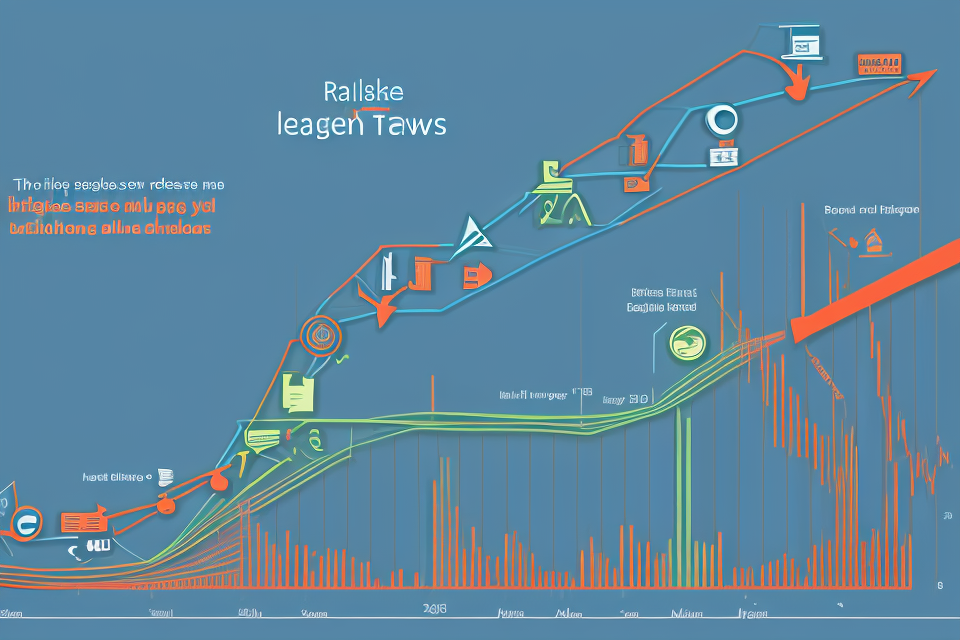The world of packaging is an ever-evolving one, with new innovations and designs constantly emerging. One such packaging material that has gained immense popularity in recent years is aluminum. While most aluminum cans are relatively small, there are some that stand out for their massive size. In this article, we will explore the largest aluminum can, its dimensions, and its applications. Whether you’re a packaging enthusiast or simply curious about the world’s largest aluminum can, read on to discover the fascinating details behind this impressive feat of engineering.
What is the Largest Aluminum Can?
Specifications and Dimensions
The largest aluminum can is a colossal feat of engineering, boasting specifications and dimensions that set it apart from other beverage containers. This monumental can holds an impressive 19.2 ounces of liquid, making it the perfect choice for parties, outdoor events, or simply enjoying a refreshing beverage.
Its dimensions are equally remarkable, with a height of 7.5 inches and a diameter of 2.625 inches. This mammoth can is designed to hold its contents securely, while also being easy to handle and transport.
Moreover, the largest aluminum can is constructed with premium quality materials, ensuring that it is durable and long-lasting. Its thick walls and sturdy base provide a solid foundation for stacking, making it an ideal choice for storing and transporting multiple cans at once.
In conclusion, the largest aluminum can is a marvel of engineering, boasting impressive specifications and dimensions that make it a top choice for beverage enthusiasts everywhere. Whether you’re looking to quench your thirst or impress your friends, this monstrous can is sure to do the trick.
Comparison with Other Aluminum Cans
When discussing the largest aluminum can, it is important to compare it with other aluminum cans in terms of their dimensions and applications.
Aluminum cans come in various sizes, ranging from small personal care cans to large industrial cans. The largest aluminum can, however, is not a single size but rather a range of sizes that vary depending on the intended use.
One way to compare the largest aluminum can with other aluminum cans is by looking at their dimensions. The largest aluminum can is typically larger than other aluminum cans, with a diameter of up to 16 inches and a height of up to 24 inches. This size makes it suitable for holding large quantities of liquid, such as beverages or industrial chemicals.
Another way to compare the largest aluminum can with other aluminum cans is by looking at their applications. While other aluminum cans may be used for personal care products or food items, the largest aluminum can is typically used for industrial or commercial purposes. For example, it may be used to store and transport large quantities of oil, gasoline, or other industrial chemicals.
Overall, when comparing the largest aluminum can with other aluminum cans, it is clear that it is larger and has different applications than other aluminum cans. Its size and intended use make it suitable for industrial and commercial purposes, while other aluminum cans may be more suitable for personal care or food items.
How is the Largest Aluminum Can Used?
Industrial Applications
The largest aluminum can has numerous industrial applications that showcase its versatility and strength. Some of these applications include:
Oil and Gas Industry
The largest aluminum can is used in the oil and gas industry for transporting and storing large quantities of fluids. Its durability and resistance to corrosion make it an ideal choice for this purpose. The cans are typically used for transporting crude oil, refined oil, and other chemicals used in the industry.
Chemical Industry
The largest aluminum can is also used in the chemical industry for storing and transporting hazardous chemicals. Its high-strength-to-weight ratio makes it an ideal choice for this purpose, as it can handle heavy loads without compromising on safety. The cans are typically used for transporting chemicals such as acids, bases, and solvents.
Food and Beverage Industry
The largest aluminum can is used in the food and beverage industry for packaging large quantities of liquids. Its lightweight and durable nature make it an ideal choice for this purpose. The cans are typically used for packaging products such as juices, soda, and other beverages.
Aerospace Industry
The largest aluminum can is used in the aerospace industry for storing and transporting fluids such as fuel and hydraulic fluid. Its high-strength-to-weight ratio and resistance to corrosion make it an ideal choice for this purpose. The cans are typically used in aircraft and spacecraft for storing and transporting fluids.
In conclusion, the largest aluminum can has a wide range of industrial applications due to its strength, durability, and resistance to corrosion. Its versatility and ability to handle heavy loads make it an ideal choice for various industries, including oil and gas, chemical, food and beverage, and aerospace.
Consumer Products
The largest aluminum can, with its remarkable dimensions and strength, has a wide range of applications in consumer products. Some of the most common consumer products that utilize the largest aluminum can include:
- Beverages: The largest aluminum can is widely used in the production of beverages such as soft drinks, energy drinks, and beer. Its high strength-to-weight ratio makes it an ideal choice for containing carbonated drinks, which require a strong and durable container to withstand the pressure of carbonation.
- Food Products: The largest aluminum can is also used in the packaging of a variety of food products, including canned soups, sauces, and meats. Its resistance to corrosion and its ability to maintain a stable temperature make it an ideal choice for preserving the freshness and quality of these products.
- Personal Care Products: The largest aluminum can is also used in the packaging of personal care products such as shampoos, conditioners, and lotions. Its ability to protect against light and air contamination makes it an ideal choice for these products, which require protection from exposure to air and light to maintain their effectiveness.
- Chemicals and Industrial Products: The largest aluminum can is also used in the packaging of chemicals and industrial products, such as motor oil and transmission fluid. Its high resistance to chemicals and its ability to withstand high temperatures make it an ideal choice for these products, which require a strong and durable container to withstand the harsh conditions of industrial use.
Overall, the largest aluminum can has a wide range of applications in consumer products, and its unique properties make it an ideal choice for a variety of different products.
Manufacturing Process of the Largest Aluminum Can
Design and Engineering
Design and engineering play a crucial role in the manufacturing process of the largest aluminum can. The design process involves creating a detailed plan of the can’s dimensions, shape, and overall appearance. Engineers use computer-aided design (CAD) software to create 3D models of the can and to test its structural integrity.
The engineering process involves selecting the appropriate aluminum alloy for the can, based on its intended use and the desired properties. The aluminum alloy is then formed into the can using a process called extrusion, which involves pushing the aluminum through a die to create the desired shape.
Once the can has been formed, it undergoes various inspections and tests to ensure that it meets the required standards for strength, durability, and safety. This includes testing for leak-proofness, pressure resistance, and impact resistance.
Overall, the design and engineering of the largest aluminum can are critical to its success in the market. A well-designed can that meets the needs of its intended users can help to drive sales and establish a strong brand reputation.
Production and Assembly
The production and assembly of the largest aluminum can involves several steps that ensure the quality and durability of the final product. These steps include:
Billet Casting
The first step in the production process is the creation of the aluminum billets. These billets are large, rectangular-shaped blocks of aluminum that are used to create the cans. The billets are produced using a process called direct chill casting, which involves melting the aluminum and pouring it into a mold to create the desired shape.
Bending and Drawing
Once the billets have been created, they are sent through a series of machines that bend and draw them into the shape of the can. This process involves heating the aluminum to a high temperature and then stretching it to create the desired shape.
Inspecting and Assembling
After the cans have been formed, they are inspected for any defects or imperfections. Any cans that do not meet the required standards are discarded, while the rest are assembled into packs of the desired size.
Finishing and Packaging
The final step in the production process is the finishing and packaging of the cans. This involves adding any necessary labels or branding, as well as placing the cans into their respective packaging materials. The finished cans are then ready for distribution to retailers and consumers.
Overall, the production and assembly process for the largest aluminum can is a complex and highly specialized process that requires precise control over temperature, pressure, and other variables to ensure the quality and durability of the final product.
Advantages and Disadvantages of the Largest Aluminum Can
Benefits of the Largest Aluminum Can
- Improved Durability: The largest aluminum can offers enhanced durability and strength, making it ideal for transporting heavy loads or storing large quantities of materials.
- Corrosion Resistance: Aluminum is known for its resistance to corrosion, which means that the largest aluminum can is less likely to rust or degrade over time, even when exposed to harsh environments.
- Cost-Effective: Compared to other materials, such as steel or plastic, aluminum is a cost-effective option for manufacturing the largest cans. This can result in significant savings for businesses and consumers.
- Versatility: The largest aluminum can can be used for a wide range of applications, including food and beverage storage, chemical transport, and more. Its versatility makes it a popular choice for various industries.
- Eco-Friendly: Aluminum is a sustainable material that can be recycled indefinitely without losing its properties. This makes the largest aluminum can an environmentally friendly option for storing and transporting materials.
Drawbacks of the Largest Aluminum Can
While the largest aluminum can offers numerous benefits, it is important to acknowledge its drawbacks as well. One significant disadvantage is its limited compatibility with standard packaging equipment. The oversized dimensions of the can may cause difficulties in handling and transportation, as many packaging machines are not designed to accommodate such large containers.
Additionally, the increased size of the aluminum can also leads to increased production costs. The materials and manufacturing processes required to produce the largest aluminum can are more complex and resource-intensive compared to standard aluminum cans. This results in higher production costs, which may not be feasible for all businesses, especially smaller companies.
Another drawback is the potential for increased waste. The larger size of the aluminum can means that more material is used in its production, which can lead to a higher volume of waste if not properly recycled. This may have negative environmental implications and may not align with sustainability goals.
Furthermore, the largest aluminum can may not be suitable for all applications. Its oversized dimensions may limit its use in certain industries or settings, such as food service or vending machines, where smaller packaging options are more practical.
Overall, while the largest aluminum can offers numerous advantages, it is important to consider its drawbacks and determine if its benefits outweigh its limitations for specific applications.
Market Trends for the Largest Aluminum Can
Growth and Expansion
The market for the largest aluminum can has been experiencing significant growth and expansion in recent years. This is primarily due to the increasing demand for sustainable and environmentally friendly packaging solutions in various industries. As consumers become more conscious of the impact of their consumption on the environment, there is a growing preference for products that are packaged in eco-friendly materials.
One of the main drivers of growth in the market for the largest aluminum can is the increasing demand for sustainable packaging in the food and beverage industry. Aluminum cans are a popular choice for packaging beverages because they are lightweight, durable, and recyclable. Additionally, aluminum cans have a lower carbon footprint compared to other packaging materials, making them an attractive option for environmentally conscious consumers.
Another factor contributing to the growth of the market for the largest aluminum can is the increasing demand for sustainable packaging in the pharmaceutical industry. Aluminum cans are commonly used for packaging liquid medications, and the demand for these cans is expected to increase as more companies look for eco-friendly packaging solutions.
The growth and expansion of the market for the largest aluminum can is also being driven by the increasing popularity of online shopping. With more consumers shopping online, there is a growing need for durable and protective packaging solutions that can withstand the rigors of shipping and handling. Aluminum cans are well-suited for this purpose, and their popularity as a packaging material is expected to continue to grow as e-commerce becomes more prevalent.
Overall, the market for the largest aluminum can is poised for continued growth and expansion in the coming years, driven by increasing demand for sustainable and environmentally friendly packaging solutions in various industries.
Competition and Innovation
In the market for the largest aluminum can, competition and innovation play a crucial role in shaping the industry. Manufacturers strive to create larger and more efficient containers, while also improving the design and functionality of these products. Here are some key aspects of competition and innovation in the largest aluminum can market:
- Materials and Production Techniques: Manufacturers utilize advanced production techniques and innovative materials to create larger and more durable aluminum cans. For instance, the use of high-strength aluminum alloys allows for the production of cans that are lighter and stronger than traditional cans, while also offering improved insulation properties.
- Design and Engineering: Innovative design and engineering are crucial in creating larger aluminum cans that are easier to handle, store, and transport. This includes developing unique shapes and sizes, incorporating ergonomic features, and optimizing the overall structure of the can to improve its performance and efficiency.
- Environmental Sustainability: With increasing focus on sustainability and eco-friendliness, manufacturers are exploring new ways to create larger aluminum cans that are more environmentally friendly. This includes using recyclable materials, implementing recycling programs, and designing cans that are easier to recycle and repurpose.
- Partnerships and Collaborations: To stay ahead in the market, manufacturers often engage in partnerships and collaborations with other companies and industry leaders. This allows them to access new technologies, expertise, and resources, and to stay informed about the latest trends and developments in the industry.
- Consumer Demand and Preferences: Ultimately, consumer demand and preferences play a significant role in shaping the market for the largest aluminum can. As consumers become more aware of the benefits and advantages of these products, they are more likely to seek out larger aluminum cans that offer improved performance and functionality. Manufacturers must therefore remain attuned to these demands and adapt their products accordingly.
Future Developments and Innovations for the Largest Aluminum Can
Emerging Technologies
Advancements in Material Science
- Development of new alloys with enhanced strength and durability
- Integration of lightweight materials to reduce overall weight
- Improved corrosion resistance through surface treatments
Smart Packaging Technologies
- Integration of sensors to monitor temperature and freshness
- Development of active packaging that can extend shelf life
- Use of digital labels for real-time tracking and authentication
Sustainable Manufacturing Practices
- Adoption of recycling technologies to reduce waste
- Use of renewable energy sources in production processes
- Development of circular economy models for end-of-life management
These emerging technologies have the potential to significantly enhance the performance and sustainability of the largest aluminum can. By leveraging advancements in material science, smart packaging, and sustainable manufacturing practices, the largest aluminum can can be further optimized to meet the evolving needs of various industries.
Potential Applications
- Industrial Use: The largest aluminum can has potential for use in industrial applications such as transporting and storing chemicals, oils, and other hazardous materials. Its durability and resistance to corrosion make it an ideal choice for these purposes.
- Food and Beverage Industry: The largest aluminum can could also be used in the food and beverage industry for packaging large quantities of products such as canned soups, juices, and other beverages. Its large size makes it convenient for storing and transporting large quantities of these products.
- Transportation Industry: The largest aluminum can could potentially be used in the transportation industry for storing and transporting fluids such as motor oil, transmission fluid, and other automotive fluids. Its large size and durability make it an ideal choice for these purposes.
- Construction Industry: The largest aluminum can could also be used in the construction industry for storing and transporting building materials such as concrete, mortar, and other construction fluids. Its large size and durability make it an ideal choice for these purposes.
- Other Potential Applications: The largest aluminum can has potential for use in a variety of other applications such as storing and transporting fertilizers, pesticides, and other agricultural products. Its large size and durability make it an ideal choice for these purposes as well.
Key Takeaways
- The continued development of larger aluminum cans is likely to be driven by advancements in manufacturing technology and a growing demand for sustainable packaging solutions.
- Innovations in aluminum can design may include improved sealing mechanisms, thinner walls, and increased use of recycled materials to reduce environmental impact.
- The largest aluminum can may find new applications in emerging industries such as space exploration, renewable energy, and food packaging.
- As consumer awareness of sustainability issues grows, the largest aluminum can may become an increasingly popular choice for packaging products.
- The largest aluminum can’s potential for reuse and recycling will be crucial in its continued adoption and use in the future.
Final Thoughts
The development of the largest aluminum can has significant implications for various industries, and its potential applications are vast. As the demand for sustainable and eco-friendly packaging solutions continues to grow, it is expected that the largest aluminum can will gain even more traction in the market.
One of the most significant advantages of the largest aluminum can is its durability. Unlike plastic containers, aluminum cans are resistant to damage and can withstand rough handling, making them ideal for transporting heavy and/or fragile items. Additionally, aluminum is a lightweight material, which reduces transportation costs and carbon emissions.
Another advantage of the largest aluminum can is its recyclability. Aluminum is one of the most recyclable materials, and recycling aluminum cans requires significantly less energy than producing new ones from raw materials. This means that the largest aluminum can can contribute to a more sustainable future, as it can be recycled multiple times without losing its integrity.
Moreover, the largest aluminum can can be used in various industries, including food and beverage, pharmaceuticals, and cosmetics. Its unique dimensions make it suitable for packaging large quantities of liquid or solid products, and its versatility makes it a popular choice for different types of packaging.
In conclusion, the largest aluminum can is a remarkable innovation that has the potential to revolutionize the packaging industry. Its durability, recyclability, and versatility make it an attractive option for various industries, and its future developments and innovations are expected to bring even more benefits to society.
FAQs
1. What is the largest aluminum can?
The largest aluminum can is typically a 16-ounce can, which is commonly used for storing beverages such as soda, energy drinks, and juice.
2. How big is the largest aluminum can?
The dimensions of the largest aluminum can can vary depending on the specific brand and type of can, but it typically measures around 6.75 inches tall and has a diameter of around 2.75 inches.
3. What is the material used to make the largest aluminum can?
The largest aluminum can is made from aluminum, which is a lightweight and durable metal that is commonly used for packaging beverages.
4. How much liquid can the largest aluminum can hold?
The largest aluminum can can typically hold up to 16 ounces of liquid, which is a common size for beverage cans.
5. What are some common applications for the largest aluminum can?
The largest aluminum can is commonly used for storing and transporting beverages such as soda, energy drinks, and juice. It is also used for packaging other types of products, such as baby formula and pet food.



